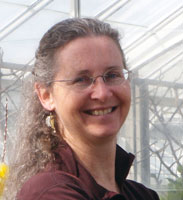Other advice
Why Wildflowers?
Start a Meadow
Latest Blog Post
Toadshade Home
|
|
General Germination procedures:
|
|
Some terms you might encounter in the instructions include:
*Cold stratification means to place the seeds in contact with moist
cool soil, simulating winter. Refrigeration usually works well, but you must make sure
the seeds are moist!
*Warm stratification means to place seeds in contact with warm, moist
soil (usually to simulate the end of summer and usually followed by cold stratification).
*Physical scarification - seed that have particularly hard seed coats
benefit from this. The easiest method is gently rubbing the seeds between two pieces of
sand paper. The goal here is to just scratch the seed coat and thereby make it easier
for the seed to absorb water.
*Sphagnum - some seeds are prone to developing mold during germination
(particularly seeds with large 'wings' like maple seeds). Sphagnum moss is naturally
anti-fungal, so mixing your seed with a little fine-milled or long fiber Sphagnum moss
(available at most garden centers) can help prevent mold.
*Hot Soak - you can break seed dormancy much quicker with some species
if the seeds are exposed to hot water. We usually place these seeds in about a cup of
180o F water (80 o C) and let them soak (and cool) overnight before planting.
*Sphagnum - some seeds are prone to developing mold during germination
(particularly seeds with large 'wings' like maple seeds). Sphagnum moss is naturally
anti-fungal, so mixing your seed with a little fine-milled or long fiber Sphagnum moss
(available at most garden centers) can help prevent mold.
*Radicle dormancy - After radicles develop, further stratification cycles are still required
to stimulate full germination and cotyledon emergence. Most species that exhibit this
behavior naturally first produce a radicle during their first year before falling dormant
to weather the winter, and only produce above-ground growth the following spring.
|
|
General considerations
In general, seeds should be planted no deeper than the thickness of the seed itself in clean,
fine potting soil. When any stratification periods are complete, place seed pots in a bright,
warm location.
If planting directly outdoors between fall and early spring, cold stratification requirements
will be taken care of naturally.
If not planting your seeds right away, we recommend you store your seed packets under cool
conditions by placing them in a refrigerated plastic container. This will not cold
stratify the seeds if they are kept dry, but simply stores them well.
|
|
Some Cold Stratification Hints.
Many wildflower seeds require some cold stratification. There are exceptions, but most seeds that require cold stratification require cold, moist conditions in which to stratify. Just putting the seed packet in the fridge won't do the trick: there's no moisture!
Your seed packet will specify how long the seed needs to be cold stratified. We cannot 'pre-stratify'
these seeds: when they are placed in cold and moist conditions the embryo inside the seed swells up
and gets ready to grow. Once those seeds are moved to warm temperatures after the period of cold,
moist stratification is over, they will begin to grow. Drying them out again would kill the seed.
So how do you cold stratify seeds at home? There are several simple ways to treat your seeds to cold
stratification:
-
Plant the seeds outdoors in the fall, winter, or early spring, and nature will do the job for you!
-
Place your seeds in a small plastic bag with a few tablespoons of moist soil, label it so it
doesn't get lost, and place it in your refrigerator (no need to freeze them, 40oF
is the target temperature for most species)! Make a note on your calendar so you don't
lose track of your seeds, and after the number of weeks specified on your seed packet have passed,
take it out of your refrigerator and sprinkle the seed/soil mix in a pot or in a warm
and sunny place outdoors (if it's already warm out) where you would like your seedlings to grow.
-
Plant your seeds in a seed pot of some sort with moist soil, cover the entire thing with plastic
(so it doesn't dry out), label it and place the whole thing in the back of your refrigerator for the
requisite number of weeks. Afterwards, place the pot in a warm sunny location (making sure to keep
the soil moist) and the seeds should germinate. Then you can transplant the resulting seedlings when
they are large enough.
Remember, seedlings are at their most vulnerable just as they begin to germinate!
Make sure they stay moist (not wet) during this critical time.
|
|
|



